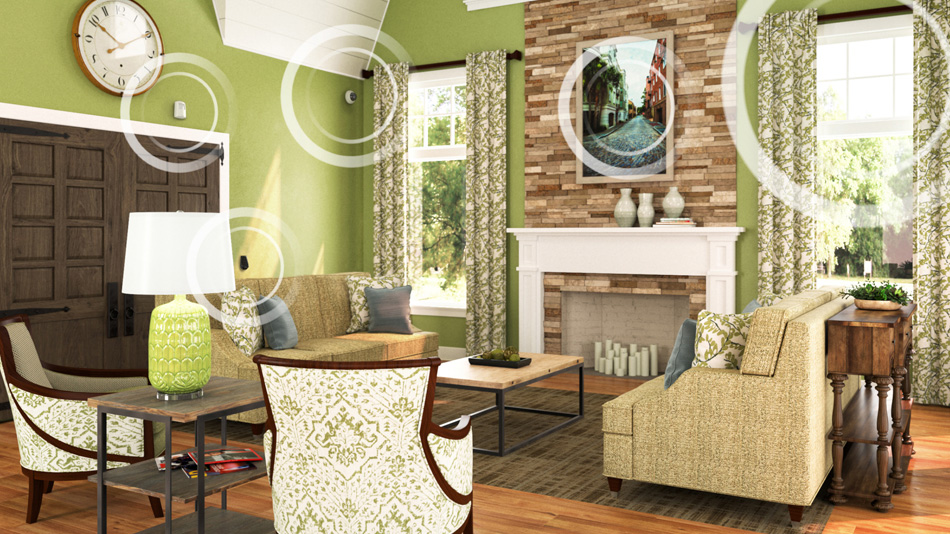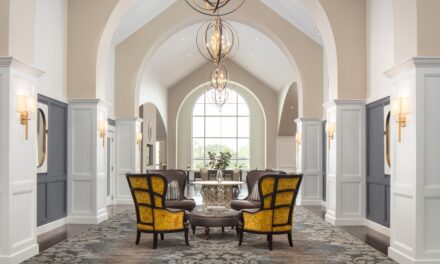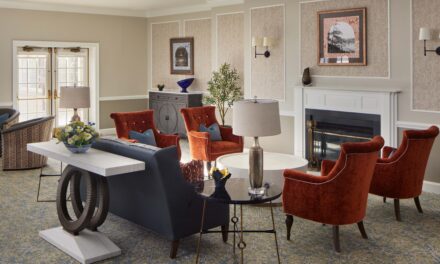Technology shown (left to right): Motion sensor, electronic door access control, security camera, digital signage and electronic-controlled window coverings.
1. Rendezvous
Early in the design process, the interior designer and operator should meet to identify the outside stakeholders contractually responsible for designing or procuring technology. After identifying the technology partners, the operator should create their own cross-functional team, which may include representatives from the operator’s clinical, IT, facilities and administration teams. Bringing these teams together early in the design process will be instrumental in delivering the best technology design possible.
Questions to consider:
How do you envision residents and staff using technology? What kind of technology will you provide and what will the resident bring?
How prominent will technology be featured? Should it be obvious or passive in the design?
What level of sophistication are you looking for and what is the budget?
2. Stay In Sync
The cross-functional team should schedule regular check-ins to help ensure the group stays aligned on design goals.
Questions to consider:
What team structure will work best to create the experience the operator is envisioning?
How frequently should you review progress? Is it driven by the calendar (e.g., every two weeks) or by design phases (e.g., at 30% design documentation)?
What is the experience level of the team in coordinating between interior design and technology? What areas of your respective disciplines can you help each other learn?
3. Analyze & Align
Conduct a page turn meeting across all disciplines when about 60% of the construction documentation is complete. This will help prevent any overlapping details, like hanging a light in front of a security camera.
Questions to consider:
What is fixed and what is flexible in each respective design?
How does the design affect community operations? Is this aligned with the experience they want to create? What needs to happen to ensure the staff is comfortable with the technology in order to maximize the intended use of the space?
4. Put It Into Action
Review the timing for each design discipline and its impact on installation.
Questions to consider:
Are there opportunities to test the look and feel of the interior finishes and technology in advance of final walk-throughs? Can you use virtual reality or visit a design center to “feel” the space?
How can we make sure the respective installation teams are communicating together (or back to the studios) on potential improvement opportunities or design issues they see?
5. Pass the Baton
Ensure staff training happens before the grand opening, and if possible, identify a technology champion – someone who knows the ins and outs of the new equipment.
Questions to consider:
Does the staff have the right skillset to operate and maintain technology? If not, could you use outside resources?




